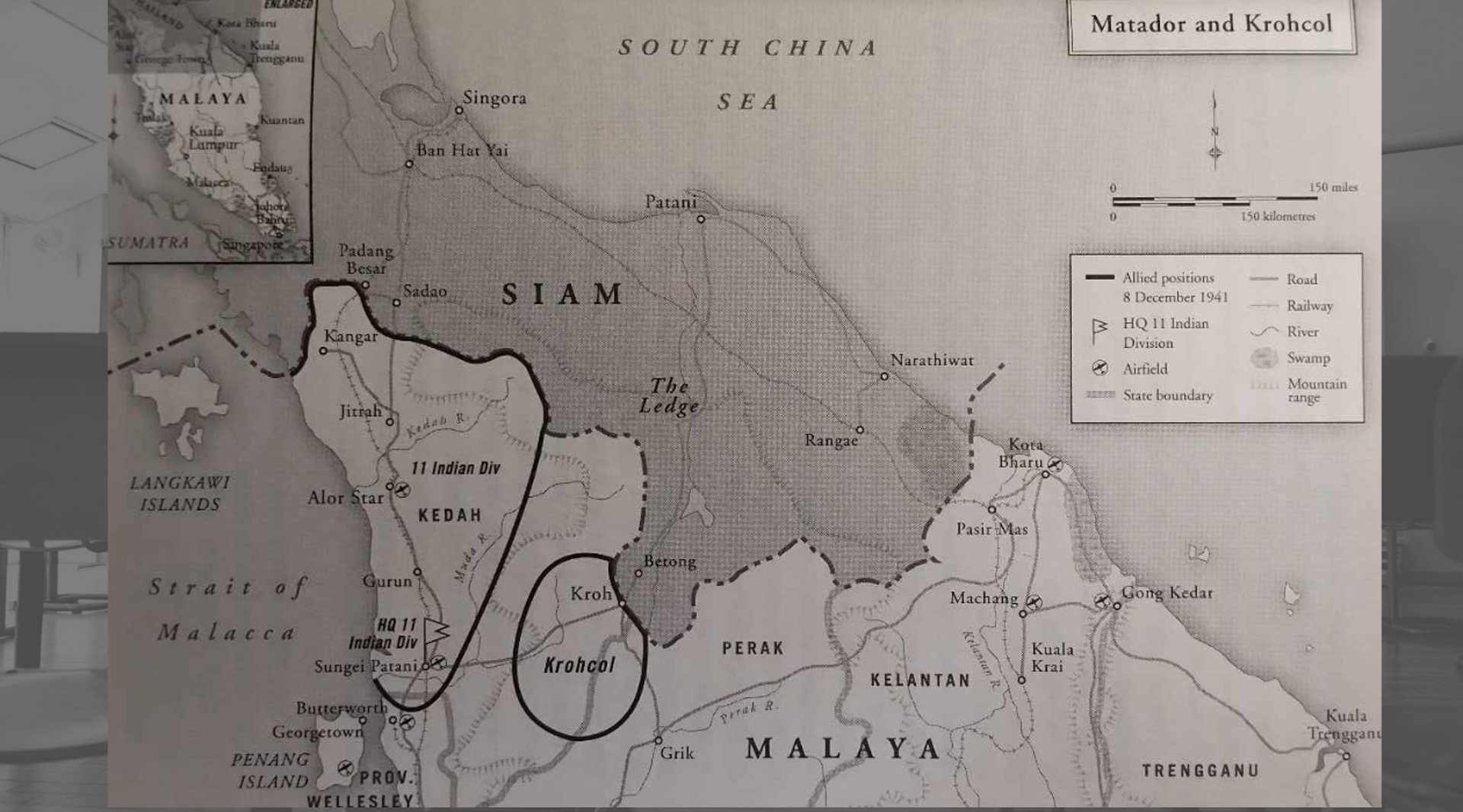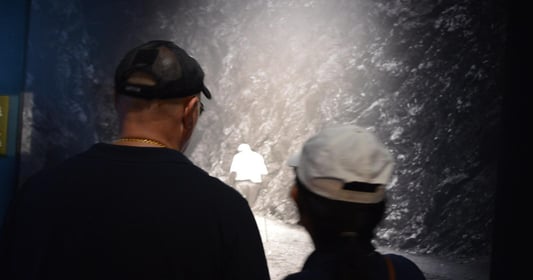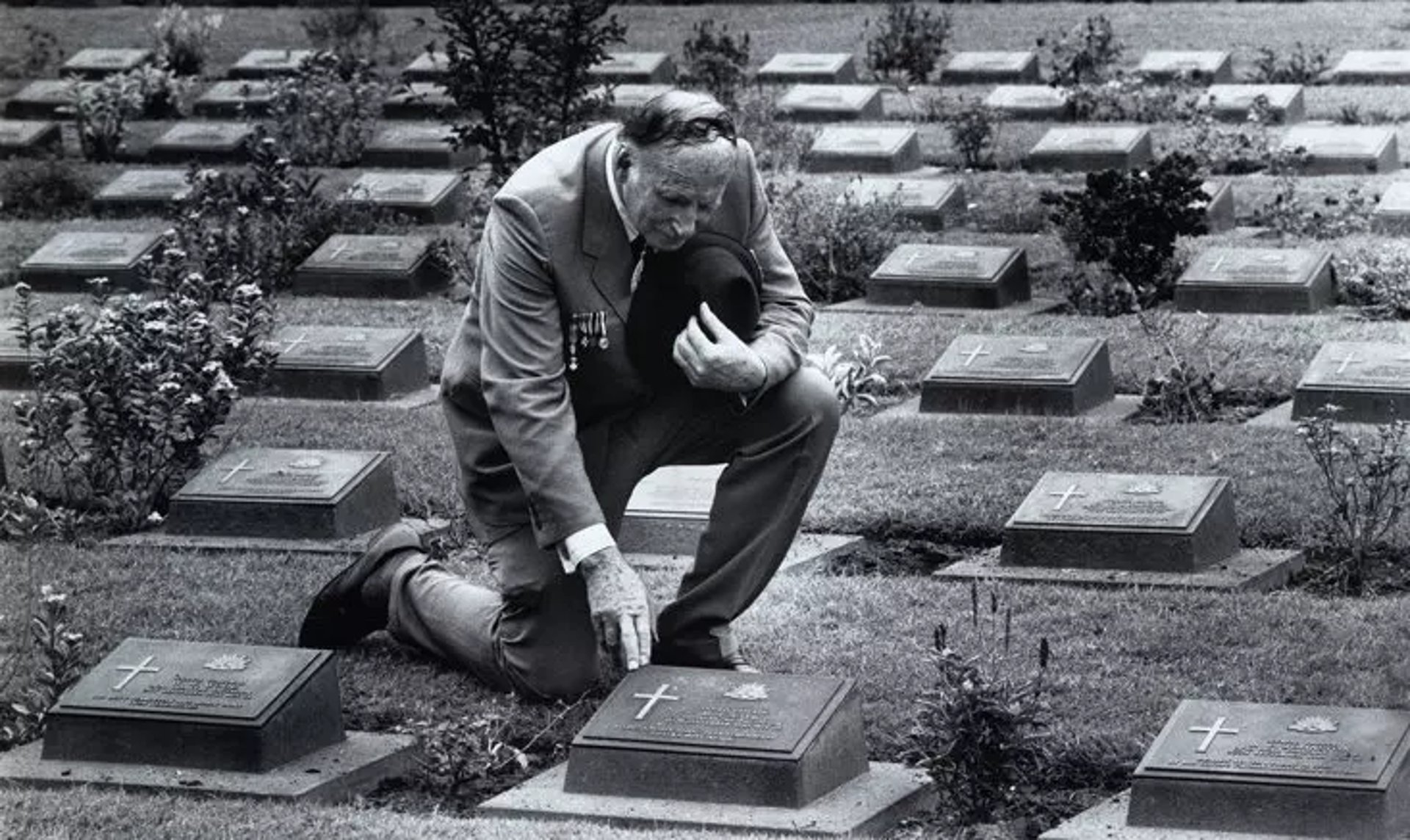
You didn’t come this far to stop
Operation Matador and Krohcol
The British Response to the Japanese Threat
Episode 35: "Operation Matador and Krohcol – The British Response to the Japanese Threat"
By September 1940, the Japanese occupation of Southern Indochina brought their bombers within striking distance of Malaya and Singapore, escalating tensions in the region. The British, aware of the Japanese threat, focused on defending the vital airfields and key strategic positions in both northern Malaya and southern Siam (Thailand). As Japan's advance became inevitable, the British leadership faced tough decisions that would shape the defense strategy leading up to the Malayan Campaign. This episode delves into British military strategy, codenamed Operation Matador and Krohcol, aimed at halting the Japanese advance. These operations faced immense political and military challenges, particularly regarding the violation of Siamese neutrality. Ultimately, the failure to launch these operations allowed the Japanese to gain a significant advantage.
WW2 HISTORYDESCENT INTO HELLIN THEIR FOOTSTEPS BLOG
Toursofwar.com
8/17/20246 min read
The Strategic Importance of Singora and Patani
The Looming Japanese Threat
The Looming Japanese Threat
The airfields in Singora and Patani in southern Siam posed the most significant threat to British defenses. The British realized that capturing these airfields was crucial for Japan's advance into Malaya. The capture would place the Japanese in a position to advance along two key roads: the Patani-Kroh Road and the Singora-Alor Star-Kuala Kangsar Road.
Critical Consequences:
Threat to the rice-producing regions of Kedah and Perlis.
Potential envelopment of any British defending forces in the region.
I have created the historical battle map with key elements labeled in English, focusing on the 1941-1942 Malayan Campaign, including Singora, Patani airfields, The Ledge, and the strategic roads such as the Patani-Kroh and Singora-Alor Star routes. The Japanese forces are indicated with red arrows, and British positions are marked in blue, clearly labeling Operation Matador and Krohcol objectives. The design emphasizes readability with clean, easy-to-read labels.


Initial British Response
To counter this threat, British leadership, including General Bond and later General Brooke-Popham, proposed an advance into Siam to capture these key airfields. However, this required significant additional troop reinforcements, which were not readily available.
Strategy and Limitations
Operation Matador


When General Percival replaced Bond, he modified the plan. Operation Matador now focused solely on capturing Singora, while leaving Patani out of the equation due to limited resources. Percival also advocated occupying a key position on the Singora Road known as "The Ledge", a vital choke point 40 km inside Siamese territory.
Two Possible Tasks for the 11th Indian Division:
Capture Singora (Operation Matador).
Defend the Alor Star Airfield.
The Ledge: A portion of the Singora Road cut through a steep ridge, ideal for defensive operations (codenamed Crocodile).
Limitations and Challenges
Both Matador and Krohcol (Operation Crocodile) faced political and military hurdles. Violating Siamese neutrality would not only be seen as an act of aggression but could also provoke negative reactions from key allies, particularly the United States. The British were cautious, knowing the Japanese had to be seen as making the first move for any defensive action to be justified on the global stage.
Did You Know?


The Ledge, a critical chokepoint in the Siamese mountains, would have been a perfect defensive position had the British committed to Operation Krohcol in time.
The Dilemma of Violating Siamese Neutrality
Political and Military Handicaps
British policy in the Far East in 1941 was focused on avoiding war with Japan at all costs. The British government was wary of provoking Japan into further aggression, and the Americans, whose support was crucial, were clear that Japan had to be the aggressor. Thus, British military planners faced a severe limitation: Operation Matador and Krohcol could only be launched once the Japanese initiated hostile action, putting the defenders on the back foot.
Consequences of Delayed Action
The political indecision regarding the launch of these operations ultimately contributed to the collapse of the British defensive line in Malaya. By the time the Japanese landed at Singora on December 8, 1941, it was too late for the British to execute Matador, leaving the northern region exposed to rapid Japanese advance.


The Legacy of Matador and Krohcol
Lessons Learned
If the British had acted decisively with Operations Matador and Krohcol in December 1941, there would have been several tactical and strategic changes in the Malayan Campaign. These operations were designed to disrupt the Japanese advance into Malaya by pre-emptively capturing key airfields in southern Siam (Thailand), but political hesitations and lack of coordination ultimately delayed their execution.
Key Tactical Changes (If the Operations Had Been Launched)
Operation Matador: Matador was a preemptive plan to seize the Singora and Patani airfields before the Japanese could use them. If launched, the 11th Indian Division would have crossed into Siam to engage Japanese forces at these airfields. The success of this operation would have:
Prevented Japanese bombers from being within range of critical British positions in northern Malaya.
Stalled the Japanese advance, giving the British forces more time to organize and defend Malaya.
Allowed the British to disrupt Japanese supply lines coming from Indo-China.
The terrain, especially around The Ledge, a strategic choke point on the road to Singora, would have provided the British with a strong defensive position. The British would have been able to delay or possibly prevent the Japanese from establishing their foothold in Malaya.
Operation Krohcol: Krohcol was intended to prevent a Japanese thrust down the Kroh-Patani Road, which would allow the Japanese forces to penetrate deeper into British-controlled Malaya. If this plan had been launched early enough:
The British 12th Infantry Brigade could have engaged and stalled Japanese forces advancing along this critical route.
The Japanese attack would likely have been diverted, forcing them to fight a series of small, isolated engagements, possibly disrupting their momentum in the opening stages of the Malayan Campaign.
Airfield Defense: By capturing the airfields at Singora and Patani, the British would have denied the Japanese the ability to conduct air superiority operations in northern Malaya. This could have changed the balance of power, allowing British forces to hold defensive lines at strategic locations like Alor Star longer.
The failure to act decisively left the British without control of these vital airfields, which allowed the Japanese to rapidly conduct bombing raids on British positions, demoralizing their troops and weakening their ability to resist.


The failure to act decisively with Matador and Krohcol offers important military lessons in terms of balancing political considerations with strategic military planning. The reluctance to violate Siamese neutrality allowed Japan to establish a foothold in Malaya early in the campaign, leading to the eventual fall of Singapore.
Key Takeaways:
The importance of timing in pre-emptive military operations.
The impact of political considerations on military strategy.
The consequences of underestimating the importance of airfield defense.
The Consequences of Inaction
Had the British taken more decisive action with Matador and Krohcol, they might have:
Prevented the swift Japanese advance that culminated in the fall of Singapore.
Bolstered the defense of northern Malaya and perhaps prolonged the campaign, allowing for better reinforcement from British, Australian, and Indian units.
Maintained a defensive advantage by controlling key geographical points and airfields early on, preventing the Japanese from dominating both land and air.
In summary, the British failure to act with Operations Matador and Krohcol due to political and logistical concerns allowed Japan to quickly secure the airfields in southern Siam, outmaneuver British defenses, and proceed down the Malayan Peninsula with devastating speed, eventually leading to the fall of Singapore.
Conclusion
The failure of Operations Matador and Krohcol marked the beginning of a rapid Japanese advance into Malaya. British hesitation, combined with the challenges of limited resources and political constraints, played a key role in shaping the outcome of the Malayan Campaign. The lessons from these failed operations remain relevant, particularly in the context of pre-emptive military strikes and the impact of political considerations on battlefield success.
How You Can Help
Donations and Sponsorships: We are seeking corporate sponsorships and donations to fund ongoing restoration projects and educational programs. Your support can make a significant difference in maintaining the quality and impact of the museum.
Volunteer Opportunities: If you have expertise or time to offer, consider volunteering with us. There are many ways to get involved, from artifact restoration to educational outreach.
Spreading the Word: Share this blog and our mission with your network. The more people who know about the JEATH War Museum and its significance, the greater the impact we can achieve together.
The St Andrews Research Team is dedicated to preserving the legacy of the Thai-Burma Railway and the memories of those who suffered. We need your support to continue our work. There are several ways you can help:
Join the Cause!
If you or someone you know is interested in supporting this cause, please get in touch.
This is a chance to be part of something truly meaningful and impactful.



Together, We Can Make a Difference!
This is a veteran-run project, and we need your help to make it happen. Stand with us in honoring the legacy of the POWs and ensuring their stories are never forgotten.
